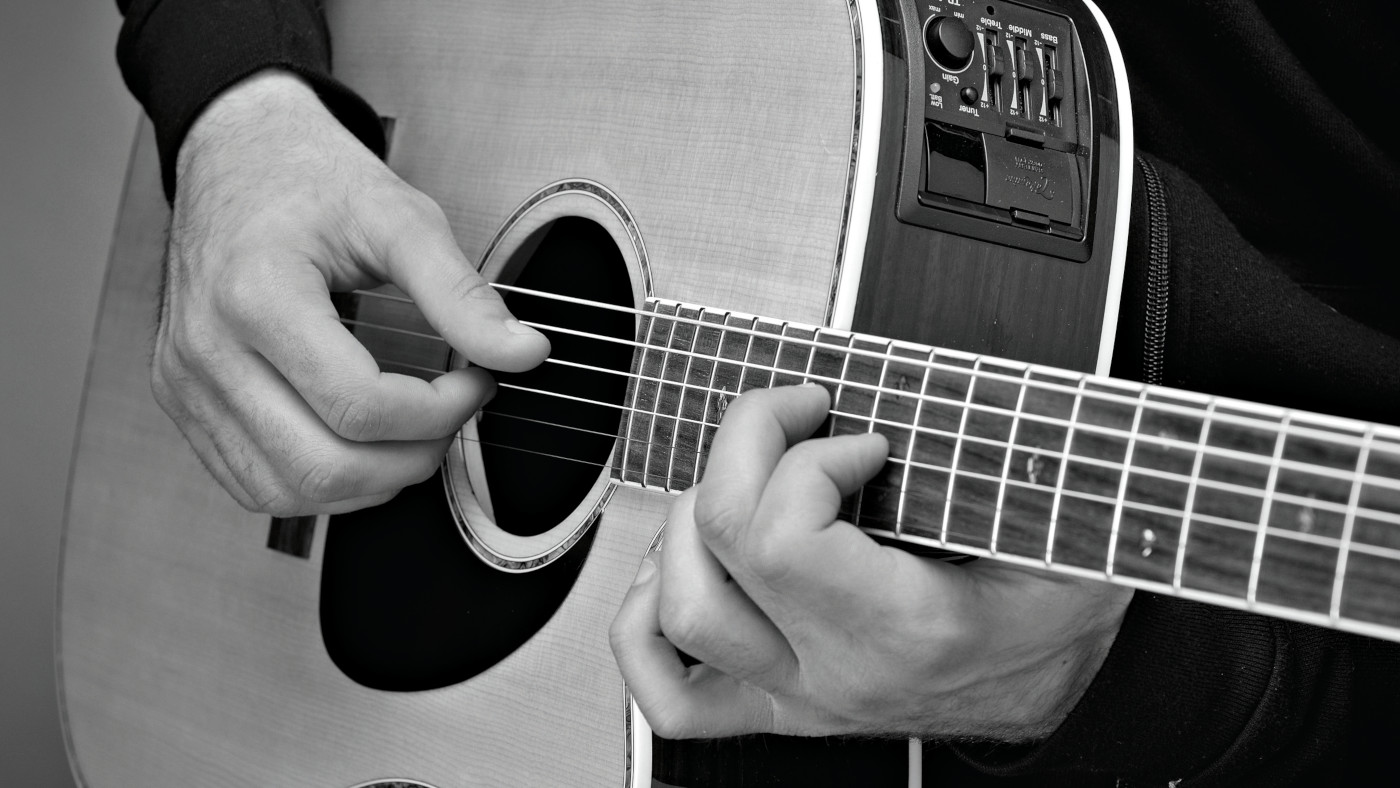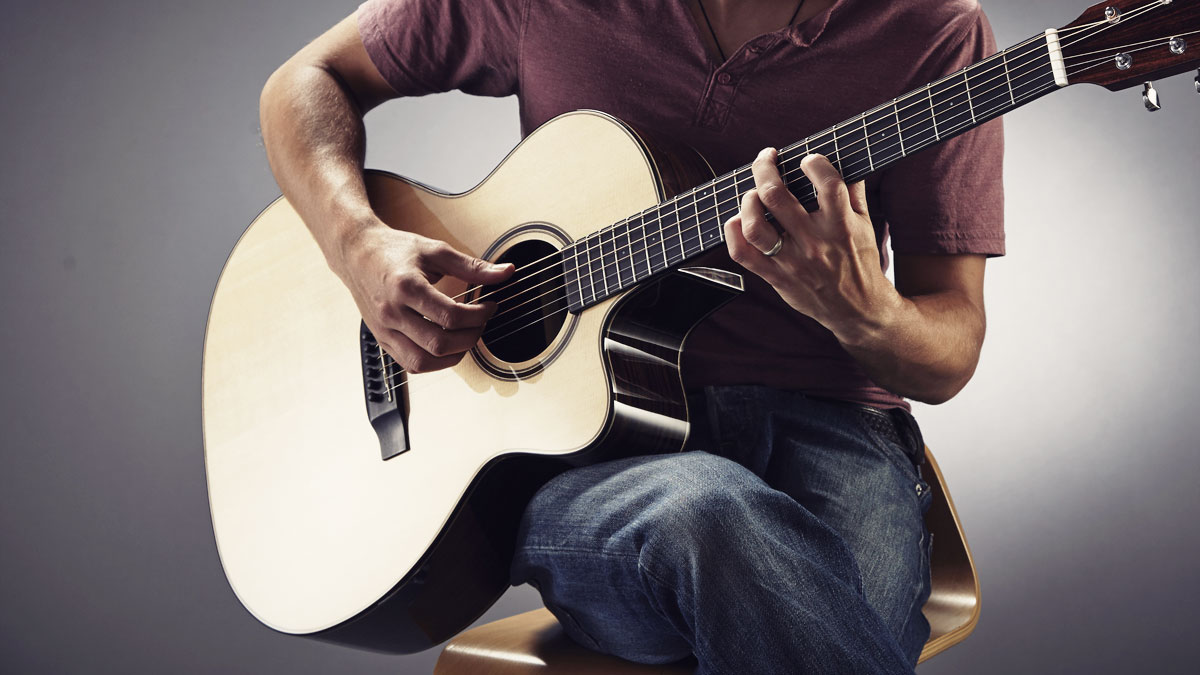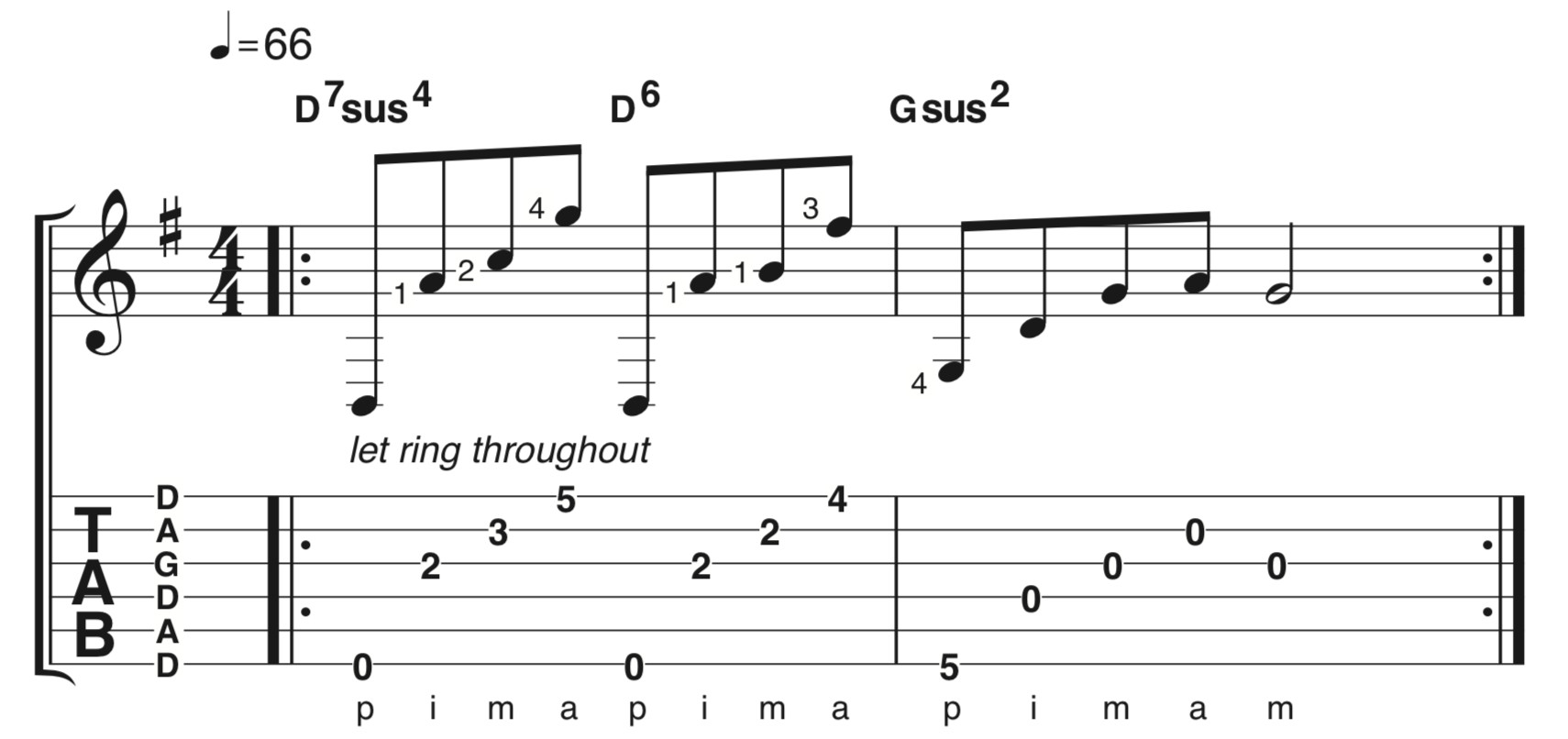How to play guitar in DADGAD tuning
Drop some strings, pick up some tunes

Get some basics covered with our lesson on this staple altered tuning.
“Where does DADGAD sit in the altered-tuning pantheon?”
DADGAD is fairly easy tuning to understand because, unlike drop D or open G, its name tells you the notes you’ll be tuning to - which is pretty handy! You’ll be changing your standard tuned guitar’s strings (E, A, D, G, B and E notes from the lowest note to the highest) to D, A, D, G, A and D.
“Why not just stick to standard tuning?”
It’s all about experimenting. Changing your guitar’s tuning means all those chord shapes you spent hours learning have new sounds. Jamming around shapes you already know is an easy route to creative playing, so, if you need inspiration, just give DADGAD a go.

“Do lots of players use DADGAD?”
Sure! The tuning was popularised in the 60s by folk guitarists Davey Graham, Bert Jansch and John Renbourn amongst others. Famous songs by other artists include Led Zeppelin’s Kashmir and Black Mountain Side, Ed Sheeran’s Photograph and Pink Floyd’s Poles Apart. Ben Howard used DADGAD on In Dreams and more extensively on 2018’s Noonday Dream album. If you want an authentic folky acoustic sound, DADGAD’s for you!
Get the MusicRadar Newsletter
Want all the hottest music and gear news, reviews, deals, features and more, direct to your inbox? Sign up here.
“How do I tune to DADGAD?”
Take a look at the 'Dad Rock' section below. You’ll see that you only need to retune your guitar’s first, second and sixth strings, provided you’re starting in standard that is. The other three strings are the same in both tunings so you can leave them as they are. You’ll need to tune the strings in question down by two semitones.
“I’m getting there, but it’s not very accurate. What’s the secret?”
Use a tuner. It’s not cheating! Even pros need help to tune up accurately, so either buy a hardware device or download a tuner app for your phone. There are countless free ones.
“Got it! Shall we play some music?”
Look at our first tab example. There’s just one chord shape here. DADGAD’s open strings give a rich sound as you move the chord around the fretboard. It’s a typical DADGAD kind of sound.
“How about the second example?”
This is a slow fingerstyle line, designed to help you get to grips with some new shapes. Experimentation is the name of the game so let your fingers run wild and try out new chords and fingerpicking patterns.
DAD-rock...
A guide to retuning your guitar to DADGAD
1. Standard tuning notes
In standard tuning the open strings are:
EADGBE
2. DADGAD notes
In DADGAD tuning the notes are (obvious, right?):
DADGAD
3. Adjust the sixth, second and first strings
Three of the notes are the same in both tunings, so there are three strings to retune; all three go down by two semitones.
DADGAD
4. Take it easy...
Gradually ease the tension from your guitar’s first, second and sixth string tuners. Each of these strings needs to go down by two semitones - the same as two frets. The third, fourth and fifth strings are the same notes in both standard and DADGAD.
1. Strummed chords

There’s only one shape here so practise moving it around the fretboard before you try strumming the rhythm. Play slowly until you get a feel for the music.
2. Folk fingerstyle

Learn the chords before attempting to pick the strings. The first four notes held down together make up the D7sus4 chord, the second four notes form the D6.
Total Guitar is Europe's best-selling guitar magazine.
Every month we feature interviews with the biggest names and hottest new acts in guitar land, plus Guest Lessons from the stars.
Finally, our Rocked & Rated section is the place to go for reviews, round-ups and help setting up your guitars and gear.
Subscribe: http://bit.ly/totalguitar










